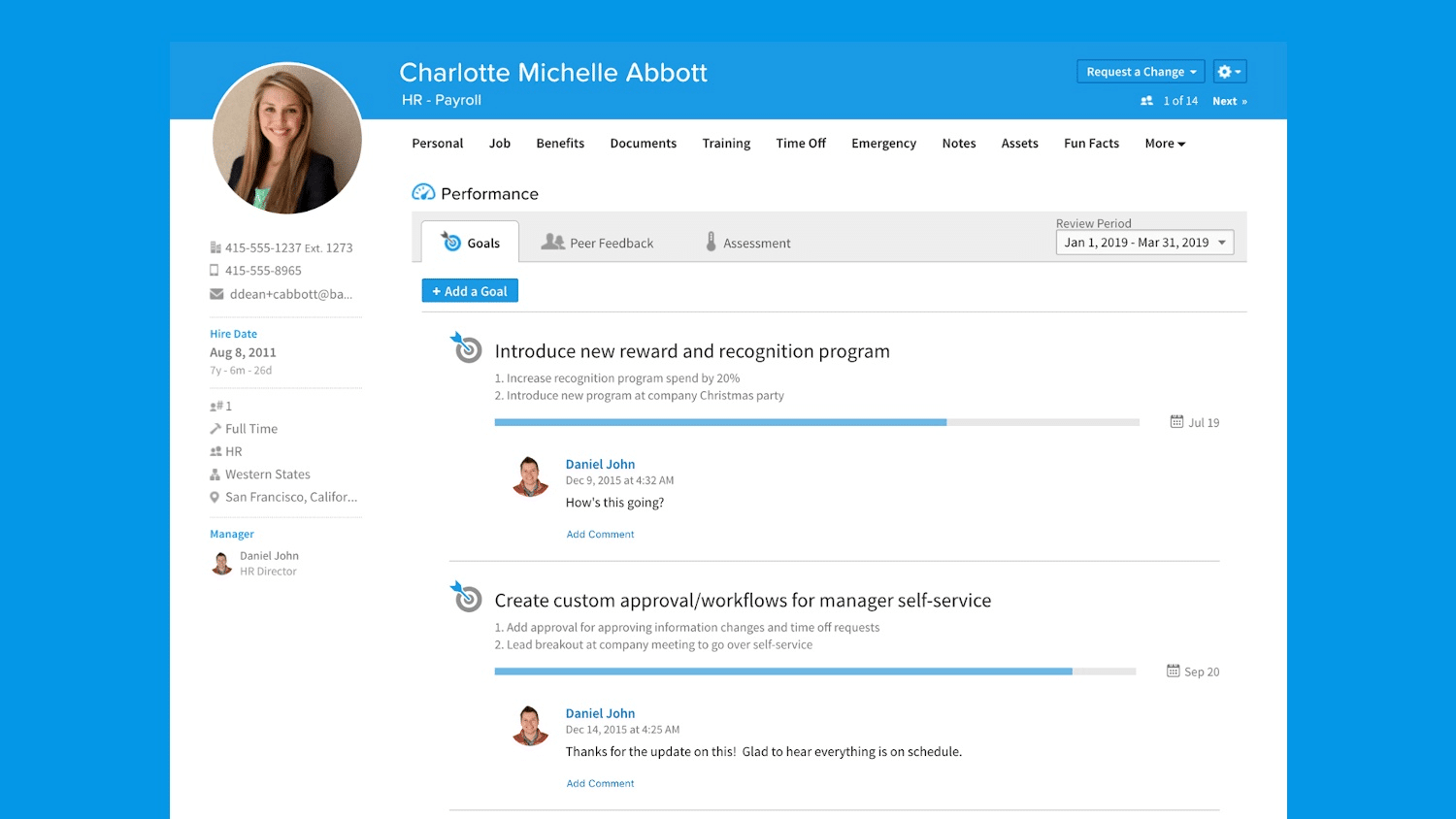We’ve all worked a job we didn’t like. A job where waking up felt more like a chore than something your body does naturally every day. The daily commute provided a week’s work of anxiety. Every minute felt like an hour. And your eyes never veered too far from the clock.
It’s not that we disliked the work we were doing. In the right circumstances, the job could be challenging, enjoyable, and fulfilling. But often it’s everything else about the role that made us loathe it.
And if this sounds like just an everyday thing that employees need to just suck it up and deal with… let’s look at the facts.
According to Gallup, the 22 million disengaged workers in the US are costing the American economy more than $350 billion dollars a year.
Not only that, companies with low employee morale have high employee turnover. And that costs organizations $15,000 every time an employee leaves.
Another related problem for companies with low employee morale is that it can make it difficult for them to hire good candidates. It’s easy to see why—no one wants to work somewhere that no one wants to work.
If you have an employee morale problem at your company or on your team, you’re likely experiencing higher-than-normal levels of absenteeism, poor quality output, and a general lack of enthusiasm. It’s making your job harder than it should be—and probably preventing you from reaching your own goals.
We’re going to help you do something about it.
In this post we cover:
- How to identify the source of low employee morale
- 5 simples ways to boost employee morale
- How to empower your team
- Mistakes to avoid along the way
How to identify the source of low employee morale
It’s unrealistic to expect everyone on your team to be 100% happy at all times. But it is reasonable to expect a consistent level of productivity, engagement and general job satisfaction amongst employees most of the time. Those are just a few key characteristics you’ll find in most effective teams.
If you see things numbers and mood dropping across the board, you may have a morale problem on your hands. The first step to fixing it is to find out what’s causing it. Here are three ways to do that.
1. Employee 1-on-1 meetings
Meeting with your direct reports every week or two helps you keep your finger on the pulse of what’s happening with different projects and tasks. It’s also a great opportunity to get a temperature check. If you detect low morale, ask a few probing questions that could get your employee to open up a bit.
“How are you feeling about your workload right now?”
“Is there anything I can do to better support you on this project?”
“What would you do differently from a management position?”
Or if you have a more candid relationship with that employee, you can take a direct approach:
“I’ve noticed the mood hasn’t been great around here lately and I’d love to do something about it. But I’m not sure what’s wrong. What’s up?”
Simply talking it out can help you uncover the reasons why your employees aren’t as happy and productive as they could be.
2. Management evaluations
Management evaluations, done quarterly or bi-annually as part of your 360 evaluation process, can give you important insights about morale at scale. If there’s a widespread issue, these evaluations are the best way to find out. Usually conducted as an anonymous company-wide survey, these are great for uncovering systemic issues at the team, department, and company level.
At the company level, employees may express that leadership doesn’t communicate strategic direction well.
At the individual leader level, teams may find that they lack support in key areas.
Favoritism may be in an issue that comes up.
Sometimes the information uncovered can be a hard pill to swallow. But it’s one of the most effective ways to reveal and correct these issues without employees worrying about repercussions.
There are a lot of great platforms that allow companies to conduct management evaluations (in addition to employee evaluations and goal setting) including Performance Pro, Culture Amp, and Bamboo HR, to name just a few:

Bamboo HR lets employees evaluate the management team too.
3. Look inward
Most leaders like to believe they’re fair and reasonable. And for the most part, they are. But we all have our blind spots.
So, when your team’s demeanor is chilly, or the productivity metrics are lagging, it’s important to get introspective and look at your own actions to see if there’s something amiss.
Think about a recent issue or conflict and ask yourself honestly,
“Did I handle that the best way I could have?”
“Is there something else I could have done to improve the outcome?”
The answers may surprise you. And that’s okay. Because self-awareness is a powerful tool for growth and good leaders learn from their mistakes.
It’s not about money—5 other ways to improve employee morale
If you surveyed your employees with the question “Do you believe you deserve better compensation for your role?” the answer will be almost unanimously and resoundingly “yes!”
But the truth is, most of the time, more money won’t fix low morale. Here are a few things that you can consider that do have a proven impact on improving morale in your organization.
1. Increase vacation days
Famed motivational speaker Jim Rohn once said, “You can always make more money, but you can’t make more time.”
He’s right. Free time is an extremely valuable thing—especially for employees with families or other big obligations outside of work. You might consider providing an additional week or two of vacation more than what’s legally required. You can also increase it with tenure as part of your retention strategy.
Extra vacation time is often attractive to prospective employees—and most importantly, your employees will return from their time off rested, productive, and grateful.
2. Add office perks
Imagine working for a large, very profitable enterprise organization that’s located in a business park far away from virtually everything. It has a full cafeteria—super convenient, right? But they charge full price for coffee—something that costs just pennies to make. It seems so petty and leaves a bad taste in your mouth—before the coffee even touches your lips.
Providing free coffee is such a small cost that provides a big payoff in morale (and productivity).
Have a look around your workspace. Are there any easy-to-implement perks? Maybe it’s a coffee machine. Maybe it’s free lunch on Wednesdays. You could provide fresh fruit or snacks. Or even a gym membership. The idea here is to make your workplace a more pleasant place to be—and your company a better one to work for.
3. Give the right kind of recognition
Some workers are great at promoting their achievements. But many of the best, brightest, and hardest-working prefer to keep their heads and keep grinding.
Truth is, recognition is as much about leaders being able to identify great work without being prompted, as it is about individual contributors pointing out their own successes. Use your 1-on-1 meetings as an opportunity to identify those who are putting in the work.
Providing recognition doesn’t have to be a grand gesture, either. While some workers appreciate the odd public shout-out, others are happy with a quick comment in private or even an email saying you notice and you appreciate it.
4. Promote work-life balance—and walk the walk
Our lives are busy. Kids get sick. Partners need help. Appointments need to be attended. And commitments need to be met. Our jobs often take up eight or 10 hours of our day, and there are many other equally important aspects of our lives that need attention outside of that.
Lots of companies talk about work-life balance, but not all of them actually follow through. Consider giving your workers the flexibility they need to take care of important “life” stuff during work hours if they need to—without nickel-and-diming them.
Running an important errand in the middle of the day won’t hurt anyone. And being able to schedule appointments inside of work hours makes it a whole lot easier to actually get an appointment. Despite the brief absence from work, this flexibility can make a huge difference in productivity and the attitude they bring into the workplace.
5. Implement a work-from-anywhere policy
Taking the whole work-life balance idea a step further, implementing a work-from-anywhere policy can do wonders for morale. It can save workers hours in commuting time and make it easier to stay on top of all of the non-work things that need to be taken care of. There are also the well-documented productivity benefits that come with it, too.
Obviously, there’s more to it than just taking your laptop home. You need to agree on a set of expectations, and you have to provide the tools that a team needs to make sure the lines of communication are wide open at all times.
A flexible and reliable communications platform (like RingCentral) is an absolutely essential aspect of any work-from-home policy. Not just for keeping tabs on everyone, but for keeping teams connected—even when they’re apart:
Build a collaboration hub that gives you different options for communicating. Video conferencing makes a quick sync easy, as if you were swinging by someone’s desk. Messaging lets you quickly share files, links, and important information in real-time.
3 ways to empower your workers
Being a cog in the machine is fine if you’re expected to do a certain amount of work every day, no more and no less.
But it’s a terrible way to inspire workers to take on more, grow with the company, or harbor any kind of passion for what they do. Here are three ways you can improve morale by empowering your employees to go above and beyond their titles and responsibilities.
1. Encourage ideas
Is there a better way to do something that management hasn’t considered? Probably. Is the strategic approach to a given project the right one? Maybe not. Is anyone going to tell you that? Not if you don’t encourage them to.
Often the best, most-impactful ideas come from the most unexpected places. Encourage your team to share their ideas (through employee engagement surveys or apps, for example) and speak truth to power. It allows you to consider new points of view, engage your team, and allow them to contribute at a higher level while feeling that their opinions and ideas are valued.
2. Make promotional tracks clear
Imagine a driven, smart, enthusiastic worker who’s willing to do what it takes to move up the ranks. They’ve taken on responsibilities outside of the scope of their role, surpassed important milestones, and gone above and beyond in every way possible, expecting that all of this effort is going to land them a promotion.
And then—for reasons completely unclear to them—someone else gets it.
One of the biggest reasons for employee turnover is a lack of growth opportunities or unclear promotional tracks within an organization.
To avoid this issue, make sure every role is well-defined, and the steps needed to move into more senior roles are clear. This will make it easier for your workers to set and reach goals, or at the very least, understand where they need to improve—instead of spinning their wheels in the sand.
3. Provide opportunities for education
A job is a place you go every day for eight hours. But a career is a place that you can also learn and grow. So give your workers the opportunity to learn within their roles. That can mean an annual educational stipend for classes or conferences. If budgets are tight, consider giving every employee a set amount of time every month to pursue a professional topic that they want to learn more about.
This boost in morale is just the tip of the iceberg. Think of it as an investment in helping them brush up on key skills and perform at a higher level.
Empty gestures to avoid when employee morale is low
Knowing what not to do is just as important as knowing what to do. So to turn things around a bit, we thought it would be helpful to look at things you might want to avoid doing when morale is low.
It’s not that these things are necessarily bad in and of themselves—they can be fun activities in a happy workplace. But if morale is already low, they can have an equal and opposite effect—and make you seem like you’re not paying attention or only interested in doing the bare minimum.
1. Celebrating birthdays or work anniversaries
It may seem absurd that someone wouldn’t want to celebrate important milestones. But when signing birthday cards becomes a weekly task on your to-do list, and everyone is asked to stop what they’re doing and gather under harsh fluorescent office lighting to eat cake in awkward silence, the whole event can feel forced—especially if the person celebrating doesn’t particularly like the attention.
Instead, create a survey that your team can answer anonymously. Ask questions like:
- Would you like your birthday celebrated with cake and ice cream?
- Should we celebrate everyone’s birthday?
- Should we just sign cards?
- Would you prefer if we did not celebrate or mention your birthday?
Use the answers to get an idea of if these gatherings really are something that people want to do. And if someone doesn’t want their birthdays or work anniversaries celebrated, you don’t have to.
2. Team-building exercises
Classic team-building exercises like trust falls may seem like a great way to have fun while developing effective teamwork habits and collaborative leadership skills.
But for teams already experiencing low morale, these exercises can feel contrived and unnecessary. Not to mention that there’s little evidence that they do anything to improve morale, establish trust, or build relationships.
Instead, ask them what they want to do. Use your 1-on-1 meetings to gather a range of ideas, and then get consensus through a survey. It doesn’t have to be a team-building exercise per se—but any opportunity to get together and build relationships that aren’t strictly professional.
3. In-office parties
Whether it’s a holiday party or a good quarter, kicking back with your coworkers is a great way to blow off some steam and build on your relationships—in theory.
But if there’s an underlying issue with morale, office parties may be a place you want to tread carefully. These events can feel more like an obligation than a benefit—particularly if it’s a potluck or themed gathering that requires everyone to contribute.
Like the other gestures to avoid, the alternative to a mandatory office gathering is to ask. Speak to your team and find out if a party is something they’d like to participate in or take a pass on. If the answer is no, reallocate the funds and resources to one of the other morale-boosting efforts we mentioned above. It’ll be money far better spent.
We have to emphasize again that these things aren’t bad in and of themselves. But if they’re the only thing you’re doing to address low morale, it could be making things worse.
Improving employee morale isn’t always easy, but it’s worth it
Poor morale isn’t something that can be fixed with the flip of a switch. And it’s not something that can be corrected overnight. It takes time, patience, introspection, and effort.
Being honest with yourself and your team will help you uncover the reasons your employees might not be working to their potential. And that will make it easier to address and improve the issues over time.
You won’t be able to control everything that’s causing the morale issues, either. And that’s ok. Focusing on the things that you can control can make a massive impact on how it feels for your workers to come into the office every morning.
Originally published Mar 01, 2020, updated Jan 07, 2021






